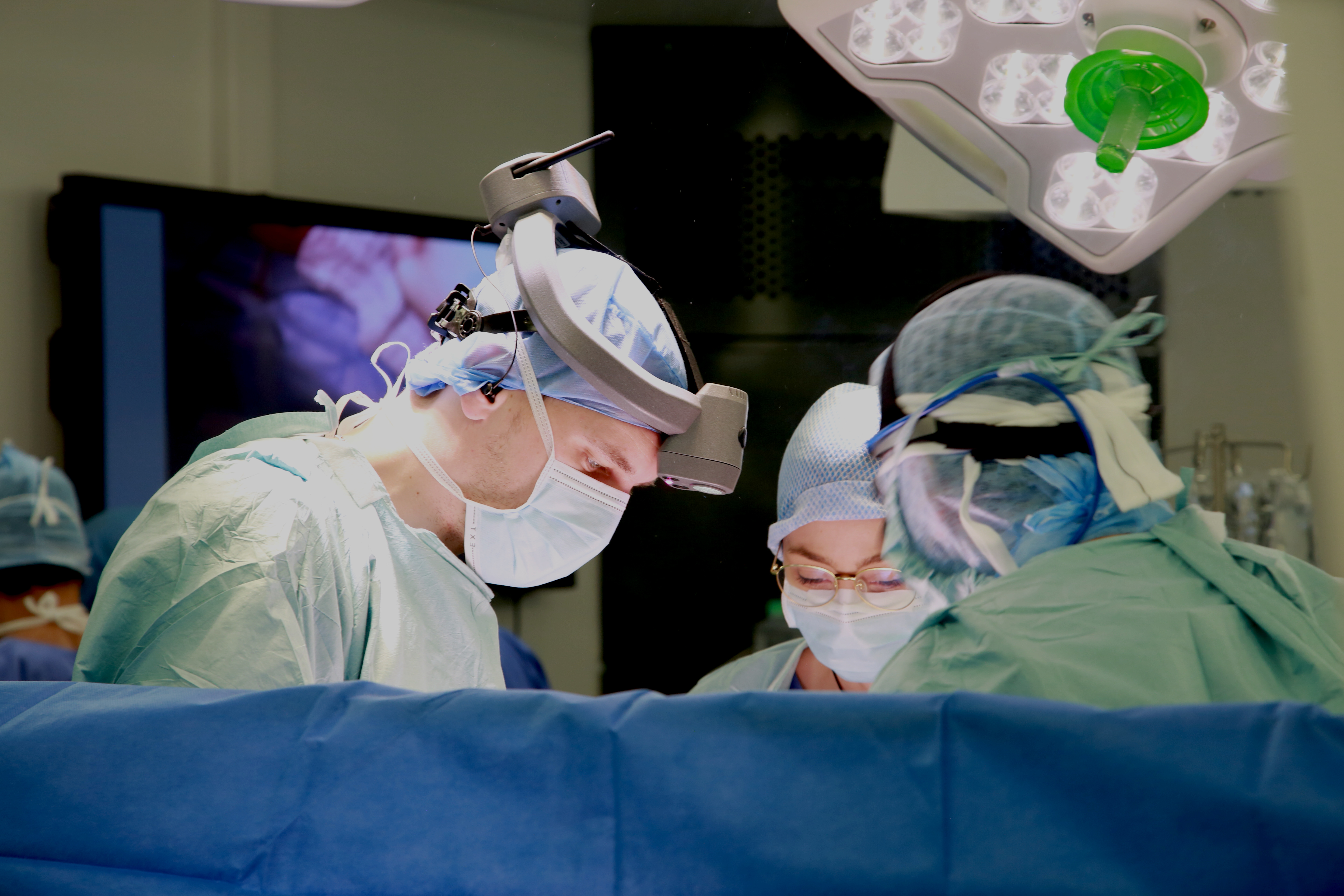
When you imagine the medical procedures of the future, you soon think of (robotic) surgeons wearing VR glasses, infrared images that light up vessels in the body, and lifelike 3D images. That future is closer than one may imagine. With the Digital Head-Mounted Microscope (DHM) developed by i-Med Technology for use in the operating room, surgeons have real-time relevant information at their fingertips and can work even more accurately. “We are growing fast and are now also entering the dental market,” says Jaap Heukelom, co-founder of i-Med.
Highly precise, microscopic procedures are increasingly the order of the day in the operating room. Even now, surgeons use tools such as microscopes and magnifying glasses to perform these procedures properly. However, these tools are limited and cannot be integrated with new digital developments.
Now i-Med Technology, based at the Brightlands Maastricht Health Campus, has developed a successor to these tools: a digital microscope to be worn on the head with razor-sharp 3D image quality, zoom function, and a powerful LED lamp. A camera records the operating table. The images are then projected digitally into the eyes of the surgeon without delay. Bystanders inside and outside the OR can watch on screens in real-time “through the surgeon’s eyes,” and add augmented reality layers, such as MRI and CT scans. Taking 3D images is also possible for education and analysis.


A step forward
In doing so, i-Med manages to take the medical community a step forward. “Because surgeons are enabled to add high-resolution images, all relevant information is available to them at a glance,” Heukelom explains. “It is no longer necessary to put down work to view CT or MRI images on a computer screen, which ensures that they can continue to work with concentration. This reduces the risk of errors and complications. In addition, it makes surgeries shorter in duration.”
Not only surgeons and patients benefit from the digital magnifier. There is also an improvement in the quality of medical education. For example, the DHM is being used during anatomy classes at university hospitals in the Netherlands. “Among others, Maastricht University, Utrecht University, and the Radboudumc have already used our system,” says Johan van de Ven, i-Med’s CEO. “Medical students see, through 3D video material, things they would not normally be able to see. We are getting a lot of positive feedback.”
The US and Japan
Four years ago, i-Med developed the first prototype of their product. Since then, the company has made big steps and the fourth generation of the system is ready. The first systems have already been sold to various organizations at home and abroad. “Among others, Maastricht University is involved and has co-invested in the product,” says Heukelom. The ball is also starting to roll abroad. “We have sold our products to organizations in the United States, Italy, and Japan. We are enormously proud of that.”
Dentists and surgical robots
I-Med is not only crossing national borders but also tapping into new markets. For example, the digital microscope can be adapted to be applied to dentists and surgical robots. “There is a lot of synergy between these markets,” says van de Ven. “Take for example the application for dentists. The machinery, the electronics, the displays, and the cameras, all remain the same in a sense. We can therefore already help dentists in the relatively short term to make a digitization move.” In addition, Eindhoven-based robot builders, Microsure, will soon be testing the system extensively on their surgical robots. We also have other promising contacts in Eindhoven and Germany.”
Support from LIOF
LIOF, the regional development organization for Limburg, supports innovative entrepreneurs from Limburg through financing and advice. Recently, the development company granted financing by means of a convertible loan from the Participation Fund to i-Med with the aim of eventually becoming a co-shareholder of the company and making the company more attractive to new investors.
“From LIOF, we are focusing on a number of important transitions, including that of healthcare,” explains Jeffrey Lutje Spelberg, investment manager at LIOF. “We predict that i-Med will take the medical world big steps forward. The start-up managed to sell their product to hospitals in times of corona. That’s special, since many hospitals were on lockdown during that period and medtech companies were in dire straits. I-Med didn’t, and that sent a particularly positive message.”
The DHM’s broad applicability in adjacent markets also gives the startup a great chance of success, Lutje Spelberg adds. “Surgeons can do their work better; soon we will also see the product in dental practices. Because of that versatility, I’m confident it’s going to be a healthy business.”
Work to be done
Coming up, i-Med will be working with partners to make improvements to the DHM. “Last week we presented our product at a large cardiovascular fair (EVC) here in Maastricht, where about 90 surgeons and medical students were able to test the DHM extensively. We collected all the feedback and came to the conclusion that the system could, for example, be made a bit lighter, in order to prevent fatigue symptoms. We are going to make every effort to achieve this”, says Van de Ven.
In addition, the system will be further optimized for use in dental practices. Heukelom: “It is particularly important to prevent back and neck complaints. Dentists must be able to sit up straight and still be able to look inside their patients’ mouths. This means that we will be adjusting the viewing angle of the microscope.”
“In short: there is still plenty of work to be done,” Van de Ven adds in conclusion. “We are therefore looking for new, talented employees to come and strengthen our team and the investment made by LIOF also enables us to do this.”

